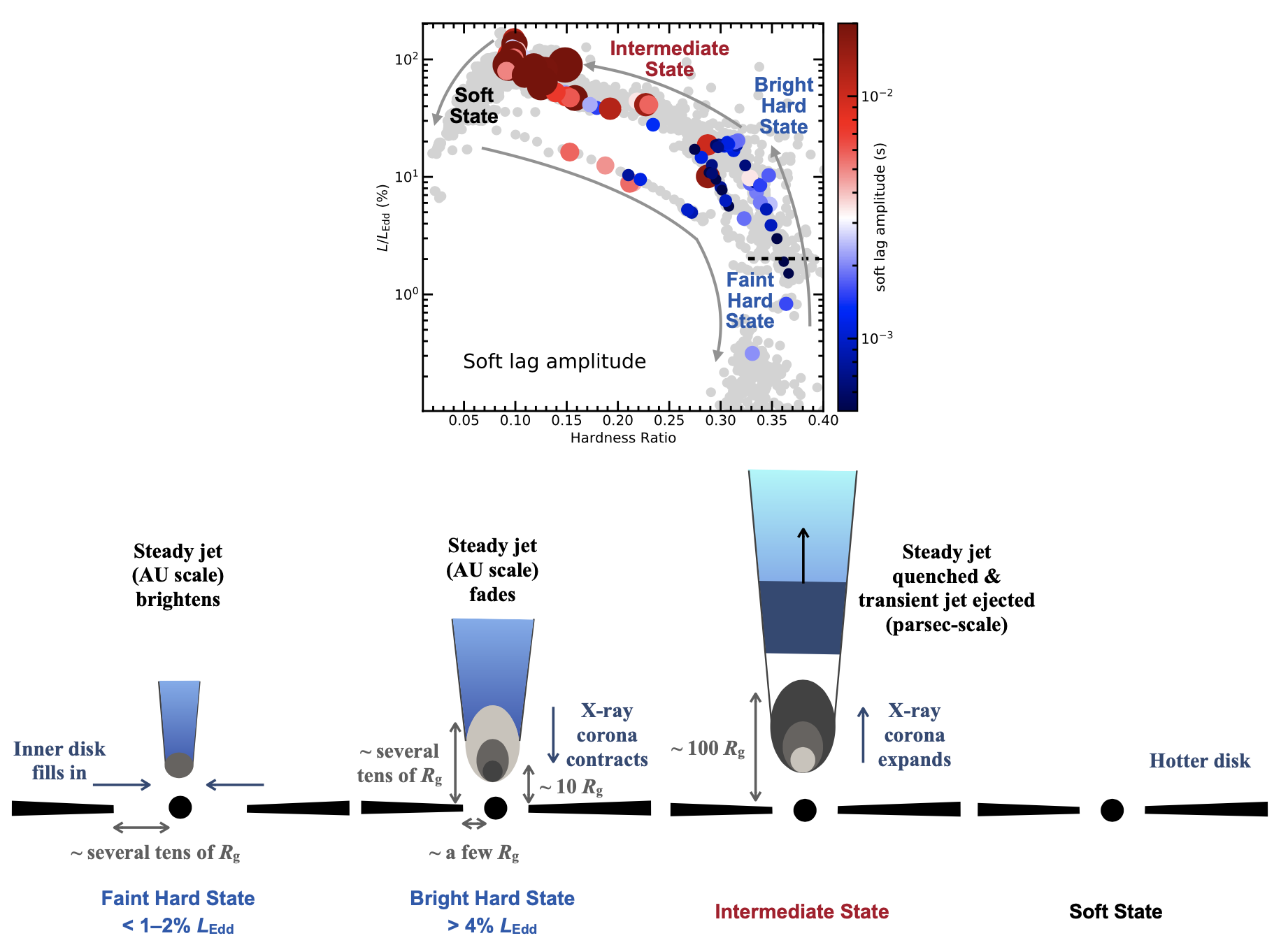NICER / ISS Science Nugget
for May 05, 2022
NICER Feeds a Reverberation Machine
A paper published this week in The Astrophysical Journal by J. Wang (MIT) and collaborators describes a systematic search in NICER data for X-ray "echoes" in nearby binary star systems in which a black hole (approximately 5 to 15 times the mass of our Sun) ingests matter from a low-mass companion star. This process of accretion is episodic, with outbursts of bright X-ray emission lasting weeks to months. NICER has monitored some 26 such outbursts, and the recent Wang et al. analysis has quintupled the number of systems in which X-ray echoes have been detected, from 2 to 10.
X-ray "echoes" produced near a black hole reverberate off inspiraling gas, enabling us to map accretion on physical scales close to the event horizon. Reverberation lags result from the light travel time difference between emission received directly from a corona of super-heated gas and its reflection from the accretion disk. The fluctuating coronal emission illuminates the black hole's surroundings, and the lags in the reflected light probe the disk-corona geometry on spatial scales inaccessible to even the highest-resolution imaging telescopes. Before the launch of NICER, reverberation had only been observed in two black-hole low-mass X-ray binaries (BH-LMXBs), and reverberation lags were only measured in the "hard" accretion state (see figure), but Wang et al. have extended the BH-LMXB reverberation analysis into the hard-to-soft state transition, and found that the reverberation lag becomes longer during the transition, evidence for a vertically expanding corona just before a radio jet ejection event. Wang et al. find that reverberation lags becoming longer during the transition is a generic behavior of black hole binaries, which is valuable in constraining models of accretion evolution across the outburst. It also suggests that the corona is the base of a jet that expands vertically or is ejected during state transition. NICER has turned measurements of lags in BH binaries from rare to commonplace, and these reverberation detections are crucial to understanding the nature of the X-ray corona, the state transition mechanism, and the couplings between disk, corona, and jet in accreting black holes.
An MIT media release about the Wang et al. Reverberation Machine work is available at the MIT News website.

Figure: Top: Measured X-ray lags (colored points) are shown in the context of the relationship between luminosity (as a percentage of maximum, or Eddington, luminosity on the vertical axis) and spectral hardness (the ratio of high-energy to low-energy X-ray brightness on the horizontal axis), both scaled to the reference black-hole system MAXI J1820+070. This relationship evolves over the course of an accretion outburst following the grey points and counterclockwise arrows. Bottom: The evolution and geometry of
the inferred accretion disk-corona-jet system in the faint-hard, bright-hard, and intermediate states. In the faint-hard state (< 1-2% LEdd), the disk is truncated at several tens of Rg (the characteristic gravitational length scale of a black hole) and the inner disk fills in, causing the reverberation lag to become shorter. In the bright-hard state (> 4% LEdd), the disk is no longer truncated, and the X-ray corona vertically contracts from several tens of Rg to approximately 10 Rg, while the steady jet fades. In the intermediate state, the X-ray corona expands to 100 Rg, while the steady jet is quenched and the transient jet is ejected. In the soft state, there is little variability to enable a lag measurement, but independent evidence suggests that the disk extends to the innermost stable radius, the disk emission dominates over the coronal emission, and the radio jet is off. During the soft-to-hard state transition and the following decay in the hard state, the soft lag amplitudes are consistent with those during the rise at earlier times in the outbursts.
<< Previous
Main Index
Next >>
NICER
Science Nuggets
Listed by year:
Listed by topic:
|